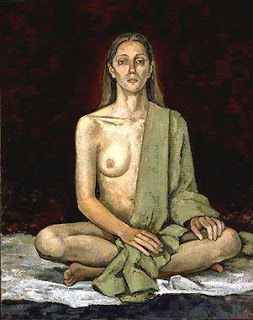 |
| Yogini deep in practice |
A blog is something you
want to keep going at an established pace and keep up forever. But, as with all
things, life tends to intervene. I've neglected my blog for a long time, and
now it's time to start it up again, rekindle the fire, and begin my practice
once more. "Practice" in the vocabulary of yoga means training, doing
postures, maintaining your regimen of exercise, perfecting your mastery of the
discipline. I have not done yoga very much the last few years, and my joints
show it. They're stiff and inflexible as a result of neglect. In the same
way, I haven't published my blog for a few months, and that seems to have
affected my expressiveness. I usually write about stories I have
published, and my blog is subtitled, "My History as a Writer." This one,
the kick-starter, will be a discussion of what I have published recently, and
after this one, I will go back to a weekly post on what I've published in the
past.
The reasons I've
neglected my blog: mainly, my job teaching as an adjunct professor at a
local university. I like teaching. I've done it all my working life and was
once a full professor. A series of circumstances led me to resign from my
professorship and begin teaching part-time. It was by choice and not by
choice--a story I don't care to share. At any rate, preparation for two
sections of African-American literature, a class I had not taught before, and
one I was asked to fill in for, took up a lot of my time. I regularly teach a
class called Literature of American Minorities, which always features a section
of African-American Literature, and so, when the regular teacher of the class
(who is African-American) could not teach it, I was the likely candidate to
fill in.
And it was a wonderful
class. Like most readers, I had encountered the African-American literature
that gets anthologized a lot: "Those Winter Sundays" by Robert
Hayden, "We Real Cool" by Gwendolyn Brooks, "The Gilded
Six-Bits" by Zora Neale Hurston. But the Norton Anthologies of Early and Modern
African-American Literature presented works I had never read and authors I had
not encountered. I read the poetry of Melvin Tolson (whom I had never heard of)
and Ethridge Knight (whom I had heard of but never read). Both were magnificent
poets, but they were new to me. I had read Gwendolyn Brooks, but never her novella,
Maud Martha. A lot of new literature
kept me busy. For another class I taught, I picked out some new books: H Is
for Hawk by Helen MacDonald and All
the Light We Cannot See by Anthony Doerr—excellent books but reading them
was time-consuming.
So the blog suffered. Now
it’s summer and I can get back to blogging. I’m going to talk about a recent
publication and then next week I’ll get back to my anatomy as a writer.
My latest publication is
a story called “Azalea,” and it appears in the April issue of Amarillo Bay. That journal is special to
me because my first-ever story, “The Girl Who Knew Nick Drake,” appeared there,
when I first began writing fiction back in 2006.
 |
| Erina |
It is the story of a
Japanese-American graphic designer who is attracted to the CEO of his company.
The social gap between them, however, is insurmountable—until one of his
friends, the CEO’s cousin, asks if he would like to meet her. Jeremy and Erina
meet. He mentions his love for Japanese poetry and quotes a line by the great
haiku master Basho: Cold, white azalea / lone nun / under a thatched roof. Erina reacts
to this, they talk, Jeremy invites her to an exhibit of his art, and is
astonished she accepts.
Their romance develops.
He learns, too, that Erina’s mother wanted her to be a Buddhist nun. She would
not consider it, they quarreled, she went to college in the US to get away from
her mother, and her mother died, the two of them unreconciled. He is surprised
to find out that Erina—despite her beauty, wealth, and the glamor of her role—hardly
dates and is still a virgin.
As their relationship
develops, he asks if she will pose for him. He wants to use her as a model for
a painting representing the poem by Basho. The painting enables her to put the
disagreement with her mother behind her. Art can bring healing through revelation of the soul.
Here is a link to the story "Azalea." And since I mentioned the first story I ever published, “The Girl Who Knew Nick
Drake,” here is a link to that. They’re both
good, stories, long ones, and reading them will enhance your lives.
More to come. Next week
I’ll talk about an old story, “The Gaia Proposition.”
